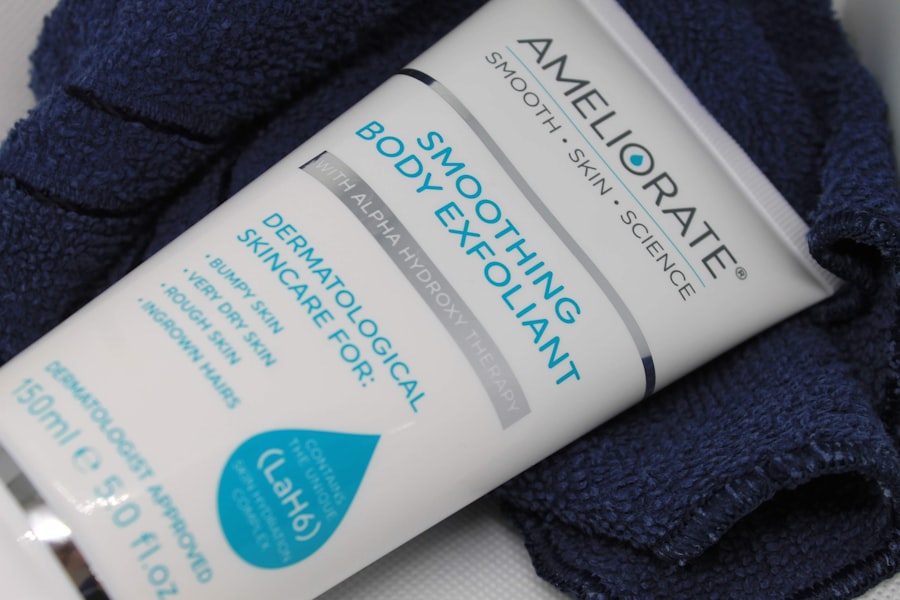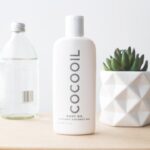Aftercare is a crucial aspect of any cosmetic or medical procedure, and understanding its significance can greatly enhance your overall experience and results. When you undergo a treatment, whether it’s a cosmetic procedure like laser hair removal or a medical intervention such as surgery, your body needs time to heal and recover. Aftercare is not merely a set of instructions; it is a vital component that ensures your skin heals properly, minimizes the risk of complications, and maximizes the benefits of the treatment you received.
Moreover, neglecting aftercare can lead to a range of issues, from prolonged discomfort to unsatisfactory results. You may find that your skin reacts negatively if you do not follow the recommended guidelines.
This could manifest as increased redness, swelling, or even infection in some cases. By understanding the importance of aftercare, you empower yourself to take control of your healing process. You can enjoy the full benefits of your treatment while minimizing potential risks.
Remember, the time and effort you invest in aftercare can significantly influence the outcome of your procedure, making it an essential part of your journey.
Key Takeaways
- Aftercare is crucial for the success and longevity of any cosmetic treatment.
- Managing discomfort and side effects is important for a smooth recovery process.
- Protecting the treated area from sun exposure is essential to prevent damage and maintain results.
- Moisturizing and hydrating the skin helps in the healing process and maintains the skin’s health.
- Avoiding certain activities and products is necessary to prevent any complications and ensure the best results.
Managing discomfort and side effects
Managing discomfort and side effects is an integral part of the aftercare process. After undergoing a treatment, it’s common to experience some level of discomfort, swelling, or redness in the treated area. Understanding how to effectively manage these sensations can make a significant difference in your recovery experience.
Over-the-counter pain relievers, such as ibuprofen or acetaminophen, can be effective in alleviating mild pain or discomfort. However, it’s essential to consult with your healthcare provider before taking any medication to ensure it’s appropriate for your specific situation. In addition to medication, applying cold compresses to the affected area can help reduce swelling and soothe irritation.
You might find that gentle cooling can provide immediate relief and promote a more comfortable healing process. It’s also important to listen to your body; if you feel that something is not right or if discomfort persists beyond what is expected, don’t hesitate to reach out to your healthcare provider for guidance. They can offer tailored advice and support to help you navigate any side effects you may encounter during your recovery.
Protecting the treated area from sun exposure

Protecting the treated area from sun exposure is paramount in ensuring optimal healing and preventing complications. After a procedure, your skin may be more sensitive and vulnerable to damage from UV rays. Direct sunlight can lead to hyperpigmentation, irritation, or even burns on freshly treated skin.
To safeguard your skin, it’s advisable to avoid sun exposure altogether for at least a few weeks following your treatment. If you must go outside, wearing protective clothing such as wide-brimmed hats or long sleeves can provide an additional layer of defense. In addition to physical barriers, applying a broad-spectrum sunscreen with a high SPF is essential for protecting the treated area.
Look for products that are specifically formulated for sensitive skin to minimize the risk of irritation. Reapplying sunscreen every two hours when outdoors is crucial, especially if you are sweating or swimming. By taking these precautions seriously, you not only protect your skin but also enhance the longevity of your results.
Remember that diligent sun protection is a long-term commitment that will benefit your skin well beyond the initial healing phase.
Moisturizing and hydrating the skin
| Product | Moisturizing Level | Hydration Level |
|---|---|---|
| Lotion A | High | Medium |
| Cream B | Medium | High |
| Serum C | High | High |
Moisturizing and hydrating the skin is another critical aspect of aftercare that should not be overlooked. After a treatment, your skin may feel dry or tight due to various factors such as inflammation or the use of specific products during the procedure. Keeping your skin well-hydrated helps promote healing and maintains its elasticity and overall health.
Look for gentle, fragrance-free moisturizers that are suitable for sensitive skin types. Ingredients like hyaluronic acid or glycerin can be particularly beneficial as they attract moisture and help retain it within the skin. Incorporating a regular moisturizing routine into your aftercare regimen can significantly improve your skin’s texture and appearance.
You might consider applying moisturizer multiple times a day, especially after cleansing or exposure to harsh environmental conditions. Additionally, drinking plenty of water is essential for internal hydration; staying well-hydrated supports your skin’s recovery from within. By prioritizing both external and internal hydration, you create an optimal environment for healing and ensure that your skin remains supple and radiant.
Avoiding certain activities and products
Avoiding certain activities and products is crucial during the aftercare phase to ensure proper healing and prevent complications. After undergoing a treatment, it’s wise to steer clear of activities that may put undue stress on your body or skin. High-intensity workouts, swimming in pools or hot tubs, and engaging in activities that cause excessive sweating can irritate the treated area and hinder recovery.
It’s best to allow your body time to heal before resuming these activities; listen to your healthcare provider’s recommendations regarding when it’s safe to return to your regular routine. In addition to avoiding strenuous activities, being mindful of the products you use on your skin is equally important. Harsh exfoliants, retinoids, or products containing alcohol can irritate sensitive skin post-treatment.
Instead, opt for gentle cleansers and soothing products that promote healing without causing further irritation. Your skincare routine should focus on nurturing rather than aggravating your skin during this critical period. By being cautious about both activities and products, you set yourself up for a smoother recovery process and better overall results.
Following a proper cleaning routine
Choosing the Right Cleanser
Start by using a gentle cleanser that is free from harsh chemicals or fragrances; this will help avoid irritation while effectively removing dirt and impurities from the skin’s surface.
Cleansing Techniques
It’s advisable to cleanse the area twice daily—once in the morning and once before bed—to ensure it remains clean without over-drying. When cleansing, be sure to use lukewarm water rather than hot water, as hot temperatures can exacerbate inflammation or sensitivity in freshly treated skin. Gently pat the area dry with a clean towel instead of rubbing it vigorously; this minimizes irritation while still ensuring that moisture is removed effectively.
Benefits of a Consistent Routine
Following this routine diligently will help create an optimal environment for healing while reducing the risk of complications such as breakouts or infections.
Monitoring the treated area for any complications
Monitoring the treated area for any complications is an essential part of aftercare that requires vigilance and attention to detail. As you recover from your procedure, it’s important to keep an eye out for any unusual changes in the treated area. This could include increased redness, swelling that doesn’t subside over time, or any signs of infection such as pus or fever.
Being proactive about monitoring these symptoms allows you to address potential issues early on before they escalate into more significant problems. If you notice anything concerning during your recovery process, don’t hesitate to reach out to your healthcare provider for guidance. They can assess the situation and provide recommendations tailored to your specific needs.
Remember that every individual’s healing process is unique; what may be normal for one person might not be for another. By staying attuned to how your body responds post-treatment, you empower yourself to take charge of your recovery journey effectively.
Scheduling follow-up appointments for maintenance and touch-ups
Scheduling follow-up appointments for maintenance and touch-ups is an integral part of ensuring long-lasting results from any treatment you undergo. Many procedures require periodic assessments or additional sessions to achieve optimal outcomes; this is particularly true for treatments like injectables or laser therapies where results may fade over time. By committing to follow-up appointments, you not only maintain the benefits of your initial treatment but also allow professionals to monitor your progress closely.
During these appointments, you have the opportunity to discuss any concerns or questions you may have regarding your results or ongoing care. Your healthcare provider can offer personalized advice on how best to maintain your results at home while also addressing any adjustments needed based on how your body has responded post-treatment. By prioritizing these follow-up visits, you ensure that you are taking proactive steps toward achieving and maintaining the best possible outcomes for your skin health and overall appearance.
In conclusion, aftercare plays an indispensable role in ensuring successful recovery following any cosmetic or medical procedure. By understanding its importance and diligently following recommended guidelines—such as managing discomfort, protecting against sun exposure, moisturizing effectively, avoiding certain activities and products, maintaining proper hygiene, monitoring for complications, and scheduling follow-ups—you set yourself up for success in achieving optimal results from your treatment journey. Your commitment to aftercare not only enhances healing but also empowers you to take control of your health and appearance moving forward.
After undergoing laser hair removal, it is crucial to follow proper aftercare instructions to ensure the best results. One helpful resource for learning about laser hair removal aftercare is the blog section of In Laser Hair Removal’s website. In one of their articles, they discuss the importance of post-treatment care and provide tips on how to properly care for your skin after a laser hair removal session. For more information on this topic, you can visit their blog here.
FAQs
What is laser hair removal?
Laser hair removal is a cosmetic procedure that uses a concentrated beam of light (laser) to remove unwanted hair. The laser targets the pigment in the hair follicle, damaging the follicle and inhibiting future hair growth.
What are the aftercare instructions for laser hair removal?
After laser hair removal, it is important to avoid sun exposure, hot showers, and excessive sweating for the first 24-48 hours. It is also recommended to use a gentle cleanser and moisturizer, and to avoid picking or scratching the treated area.
How long do I need to wait before sun exposure after laser hair removal?
It is recommended to wait at least 24-48 hours before exposing the treated area to the sun. Sun exposure can increase the risk of complications such as hyperpigmentation or burns.
Can I shave or use hair removal creams after laser hair removal?
It is safe to shave the treated area after laser hair removal, but it is important to avoid using hair removal creams or waxing, as these methods can disrupt the hair follicles and interfere with the results of the treatment.
How many sessions of laser hair removal are typically needed?
The number of sessions needed for laser hair removal varies depending on the individual’s hair type, skin color, and the area being treated. On average, most people require 6-8 sessions spaced 4-6 weeks apart to achieve optimal results.
What are the potential side effects of laser hair removal?
Common side effects of laser hair removal may include redness, swelling, and mild discomfort in the treated area. In rare cases, more serious side effects such as burns, blisters, or changes in skin pigmentation may occur. It is important to follow aftercare instructions and seek medical attention if any concerning symptoms arise.







